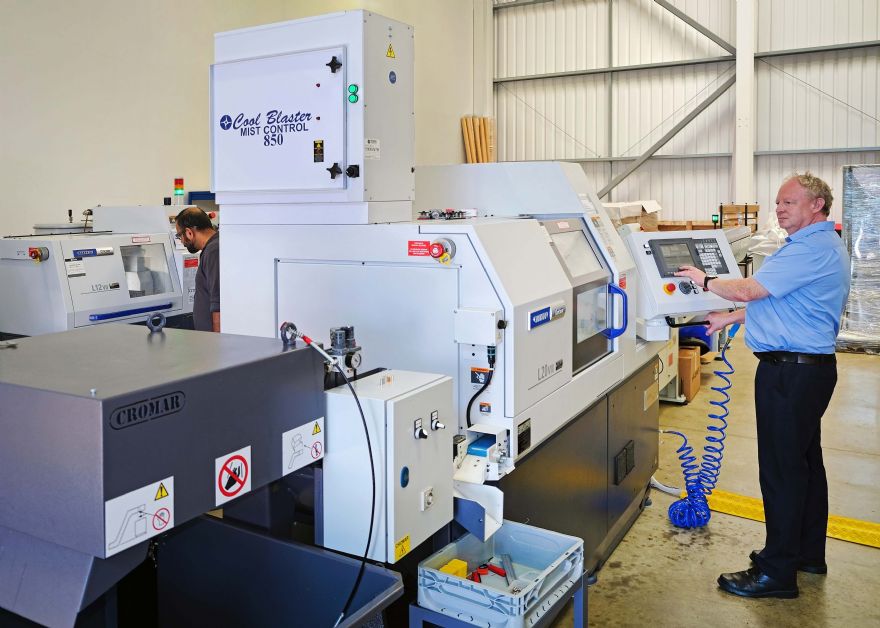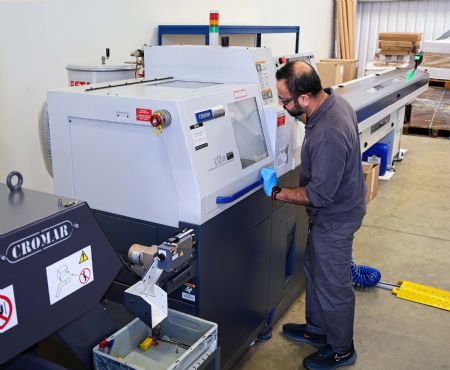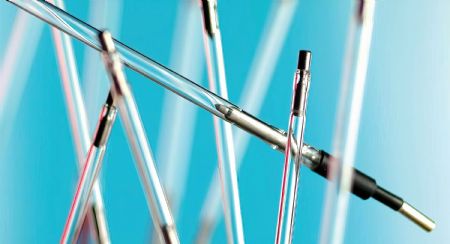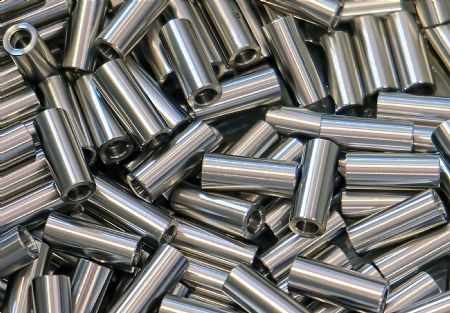 Paul Walker with the Cincom L20-VIIILFV
Paul Walker with the Cincom L20-VIIILFVWith year-on-year growth in global sales running at 10% since the start of the decade, and similar success confidently expected in the coming years, Cambridgeshire-based
First Light Lamps made the decision to replace some of its turning centres built in the 1980s and 1990s at its Ely factory with two new models that are more reliable, capable, productive and accurate. Producing 120,000 xenon and krypton lamps annually for laser and IPL (intense pulsed light) systems, used widely for medical and industrial applications, the company is the leading manufacturer of its type in Europe and among the three largest in the world.
Two legacy Miyano fixed-head lathes and a Cincom sliding-head turning centre have been removed to make room for two modern Cincoms, which were delivered in May this year by Bushey-based
Citizen Machinery UK. The lathes will not only machine all the electrodes and connectors previously produced by the three legacy Citizen lathes but, when they are fully on-stream, will also allow the 10% of the company’s components currently being sub-contracted out to be manufactured in-house. It will result in a considerable financial saving and importantly, will give the factory complete autonomy over its parts machining and lamp assembly.
The smaller of the two new Cincoms, a 12mm bar capacity L12-VIILFV, is devoted to machining lamp electrodes from lanthanated tungsten bar, 1.5 to 2m long, of various diameters between 2.8 and 9.5mm. The job was previously done by two of the old Miyano fixed-head lathes, which were purchased second-hand in 2004 when First Light Lamps was established. It is notable that, being of 34mm bar capacity, they were deliberately over-specified in terms of size to gain the rigidity of a larger production platform for machining the tough material.
 Pictured left: The Cincom L12-VIILFV at Ely is devoted to the production of electrodes from lanthanated tungsten bar
Pictured left: The Cincom L12-VIILFV at Ely is devoted to the production of electrodes from lanthanated tungsten bar Paul Walker, a director at First Light Lamps, said: “We were initially sceptical that a sliding-head lathe, especially one of 12mm capacity, would be robust enough to machine tungsten all day long. However, Citizen Machinery assured us that this model would be capable of doing so and cut demonstration parts using our tungsten bar to prove it. We didn’t even have to visit its technical centre. Citizen simply emailed us a video of the lathe cutting our parts and then sent them to us so we could inspect them on our shadowgraph.”
The L12 was supplied fitted with an extractor to remove tungsten dust from the machining area. The use of coolant is not feasible, as it would result in a highly abrasive slurry that would prematurely wear the machine. Surprisingly, the carbide cutting tools in the machining area are the same as those recommended for machining aluminium, despite the toughness of tungsten, as their rake angles and chip evacuation capability are found to be well-suited to cutting the lanthanated material, which is more ductile than pure tungsten.
Driven tool capabilityThe compact sliding-head lathe is more efficient than its 18mm bar capacity predecessor, especially with regard to its driven tool capability. It allows a hole to be drilled in-cycle in one end of the electrode to an accuracy better than was previously possible on a manual lathe, so saving an additional setup and machining operation. Moreover, the overall 30sec cycle time is no longer than before, despite the extra operation.

Pictured right: First Light Lamps produces 120,000 xenon and krypton lamps annually
for laser and IPL (intense pulsed light) systems
Three smaller legacy Miyanos are being retained to perform a second operation to shape a porous, impregnated tungsten billet after it has been brazed onto the other end of each turned tungsten stem. Notable about these lathes is that, although they were built in the 1980s, they are still able to hold tolerance after 40 years of service.
Regarding connector machining, their production from stainless steel, brass, copper or plastic bar between 6 and 16mm diameter and up to 3.7m long has been transferred from the former 1997-built sliding-head lathe to a new Cincom L20-VIIILFV. Thanks to the machine’s greatly enhanced specification, there has been a four-fold reduction in cycle time from typically 2min down to 30sec.
Bringing work in-houseAccording to Mr Walker, the aesthetic appearance of the machined surface finish is considerably better than before, another indicator of the rigidity of modern Citizen lathes. Additionally, those connector variants requiring cross drilling and flat milling can now be produced in-house, whereas previously they had to be bought in. Drawing tolerances are down to ±0.05mm and all parts go for inspection.
There are 500 designs of electrode and a similar number for connectors, which underlines the need for machining to be wholly controlled in-house, as well as lamp assembly. Sub-contracting out such a variety of parts would be incredibly difficult to control. Component batch size is low for sliding-head lathes, around 1,000-off, to support lamp assembly quantities of 50 at a time across a catalogue of 2,000 varieties. Such small volumes supplied by a sub-contractor would be expensive, which is another good reason for bringing all machining in-house at Ely.

Pictured left: Stainless steel connectors after turning on the Cincom L20-VIIILFV. Drawing tolerances are down to ±0.05mm and all parts go for inspection
Musing on the future of the company, which he owns in partnership with managing director Martin Churchley, Mr Walker said: “Our new, highly capable Citizen lathes, despite being fewer in number than previously, produce four times more connectors during our 12hr day shift, as well as all of our electrodes, many of which we were previously having to buy in.
“Furthermore, the bar-fed turning centres have the capability to run 24/7 without supervision, which would have been impractical with the old machines. It has the potential to double production output and underpin our 100 percent in-house manufacturing capability for years to come. The support provided by Citizen over the years has been extremely helpful, even though we were operating second-hand machines, so we had no hesitation in returning to them when we were in a position to buy new lathes.
He concluded: “The two new lathes were supplied as turnkey installations complete with programs and tooling, based on the successful demonstrations at Citizen’s technical centre, so production started immediately after they were delivered and our staff had been trained.”